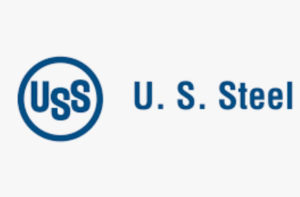- huaxiaostainless
- August 19, 2022
- 6:50 am

U.S. Steel announced on August 8 that it will invest $1 billion to build new steelmaking and continuous casting lines at its two steel plants in Mon Valley, Pennsylvania.
The company plans to build a new continuous casting line at Edgar Thomson and a new combined heat and power facility at Clairton.
The company said that the application of the new continuous casting production line will significantly improve its product competitiveness in the home appliance, construction, and industrial markets, and factory workers will also receive corresponding training in the operation of the new equipment. At the same time, the investment will boost the economy of southwestern Pennsylvania and provide job security for thousands of steelworkers.
“This investment by U.S. Steel opens a new chapter in Pennsylvania’s manufacturing industry,” David Taylor, president, and CEO of the Pennsylvania Manufacturers Association said in a news conference at the Clayton plant. The construction and application of the production line will consolidate the position of the global advanced manufacturing center in southwestern Pennsylvania.”
(Park Yue) “China Metallurgical News” (August 19, 2022, second edition of 2nd edition)
The Rationale Behind U.S. Steel’s Investment
Several factors are driving U.S. Steel’s decision to commit such a large sum to enhance its production lines:
-
Increasing Global Steel Demand: The global demand for steel, particularly in sectors such as construction, automotive, and energy, continues to grow. As industries shift towards more advanced applications and infrastructure development, the need for high-quality steel products rises. U.S. Steel’s investment in modernizing its production process ensures the company can meet these increasing demands and remain a leader in the market.
-
Cost Efficiency: Continuous casting offers significant cost-saving advantages over traditional methods. By streamlining the production process, U.S. Steel aims to reduce operational costs, energy consumption, and waste. This enables the company to produce steel more economically, potentially resulting in more competitive pricing and increased market share.
-
Sustainability: Modernizing production facilities allows U.S. Steel to implement more energy-efficient and environmentally friendly practices. Continuous casting helps reduce emissions and resource consumption, aligning with the industry’s shift towards sustainability and meeting stricter regulatory requirements.
-
Improving Product Quality: Continuous casting not only boosts production efficiency but also enhances the quality of the steel produced. U.S. Steel can deliver steel products with superior surface finishes, mechanical properties, and dimensional accuracy. These improvements benefit industries that rely on high-performance materials, such as automotive manufacturers, aerospace, and heavy industries.
Impact on the Steel Industry
U.S. Steel’s $1 billion investment will undoubtedly have far-reaching implications for the steel industry:
-
Increased Production Capacity: The construction of new continuous casting lines will significantly boost U.S. Steel’s production capacity. This will enable the company to produce more steel products and meet the growing demand from key industries like construction, transportation, and manufacturing.
-
Price Stabilization: With increased production and improved efficiency, U.S. Steel may be able to stabilize steel prices in the market. As production costs decline, the company may pass on these savings to customers, making high-quality steel products more affordable. This could have a ripple effect across the industry, potentially bringing down the cost of steel for a variety of sectors.
-
Supply Chain Resilience: U.S. Steel’s investment will enhance its ability to meet customer needs promptly and mitigate supply chain disruptions. The additional production capacity will allow the company to maintain a more stable supply of steel, even in times of increased demand or market volatility. This is particularly important in light of recent global supply chain challenges.
-
Global Competitiveness: By modernizing its facilities, U.S. Steel is positioning itself as a more competitive player on the global stage. The company will be able to compete more effectively with international steel producers, particularly those from regions like China, which have dominated the market in recent years. This move strengthens the U.S. steel industry’s foothold in the global market.
The Broader Economic Impact
Beyond its direct impact on U.S. Steel and the steel industry, this investment will have broader economic implications. The construction of new steelmaking and continuous casting lines will create job opportunities in engineering, construction, and operations. This influx of jobs will benefit local economies and provide a boost to the manufacturing sector.
Additionally, the increased supply of high-quality steel products at competitive prices will benefit industries that rely heavily on steel, such as construction and automotive manufacturing. This can lead to more affordable infrastructure projects and vehicles, benefiting consumers and driving economic growth.



